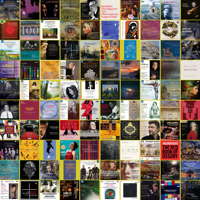 DISCUSSION: What is a work? John Dante Prevedini leads a discussion about The performing artist as co-creator, including contributions from Halida Dinova, Yekaterina Lebedeva, Béla Hartmann, David Arditti and Stephen Francis Vasta.
DISCUSSION: What is a work? John Dante Prevedini leads a discussion about The performing artist as co-creator, including contributions from Halida Dinova, Yekaterina Lebedeva, Béla Hartmann, David Arditti and Stephen Francis Vasta.

A Special Feature
GIUSEPPE PENNISI describes how Cagliari awakens
Antônio Carlos Gomes' 'Lo Schiavo'
after a long sleep
Antônio Carlos Gomes' 'Lo Schiavo'
after a long sleep
Teatro Lirico di Cagliari is rather unique in Italy, and maybe also in Europe. It is a comparatively recent opera house in a town of 180,000 inhabitants on a relatively scarcely populated island: Sardinia has a total population of a million and a half. Yet it co-produces with major international houses such as San Francisco Opera, New York City Opera, a network of Chinese houses in music schools and now the Festival Amazonas de Ópera in Manaus, Brazil. This attracts an audience from the entire island as well as from what the Sardinians call 'the continent'. The theater has nine subscription series as compared with six in many Italian opera houses (including Teatro dell'Opera in Rome and La Scala in Milan). The season is programmed skillfully: many titles are well known fare, but normally the opening night is entrusted to a special feature.
On 22 February, the 2019 season was inaugurated with the Italian (and as far as I know, the European) premiere of Lo Schiavo (The Slave) by Brazilian composer Antônio Carlos Gomes (1836-1896) on a libretto by Rodolfo Parravici. The opera is very often performed in Brazil: there are three different almost complete productions on YouTube and even a DVD, recorded live, of Brazilian stagings. Gomes lived for a long time in Italy, mostly in Milan or at his fabulous villa near Lecce. He was part of the Milanese opera scene from 1868 until 1886. Some of his operas were quite successful; Il Guarany, for instance, was premiered at La Scala in 1870 and within two years was on all the major European stages.
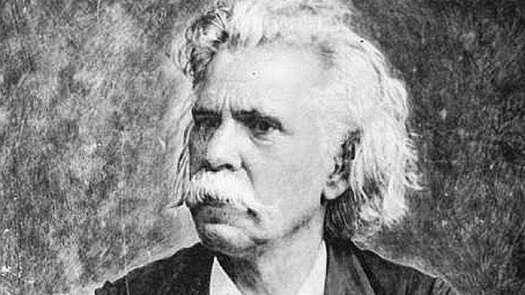
Antônio Carlos Gomes (1836-1896)
Lo Schiavo is one of his last operas: it was commissioned by Teatro Comunale di Bologna for the 1888 season but was never staged in Italy. Music historians say Gomes had a difficult personality and, after becoming quite wealthy, returned to Brazil rather poor. Eventually, Lo Schiavo had its debut (in Italian) at Rio de Janeiro's Imperial Theatre and was a major hit. In Latin Amerca, it is performed using the original Italian libretto. Enrico Caruso sang it often and considered it one of his favorite 'contemporary' operas; there are recordings of him singing the grand second act Romanza.
Gomes belonged to the 'Po Valley grand opéra' school which had its center in Milan, even if the composers came from all over Italy. They attempted to blend Verdi's melodrama with French grand opera and some slant of Wagner musikdrama: they proposed historical plots and grand tableaux, with ballets normally in the second or third act. Operas by composers such as Lauro Rossi and Alberto Franchetti, two of the most popular leaders of this style, are now seldom revived. Two titles are still frequently performed: an absolute masterpiece, Arrigo Boito's Mefistofele, and a 'great voices war horse', Amilcare Ponchielli's La Gioconda.
Lo Schiavo debuts in Italy some one hundred and thirty years later than originally programmed, and in Cagliari rather than in Bologna. The production is nearly unabridged, even if the ballet is cut because Teatro Lirico does not have a corps de ballet. It would have been too costly to hire one and to rehearse for a month. The plot is vaguely connected with the abolition of slavery, a very topical subject for the second half of the nineteenth century. It focuses on friendship between a young Portuguese and a native ('the slave'). The Portuguese is in love with an Indian girl. She is compelled to be married to 'the slave', while a French Countess is attempting to seduce the young Portuguese man. The natives revolt and the 'slave' becomes their natural leader. There is a 'semi happy ending': the Portuguese and 'the slave' reconcile, the lovers flee to a better life, and 'the slave' - son of a native King - commits suicide. Several 'Po Valley grand operas' have these unreal plots, a pretext for arias, duets, concertato, choral interventions and grand tableaux.
Davide Garattini Raimondi has provided simple but effective stage direction. Tiziano Santi's sets and Domenico Franchi's costumes are quite attractive; Alessandro Verazzi's lighting provides the right touch for dawns and sunsets in the Brazilian forest.
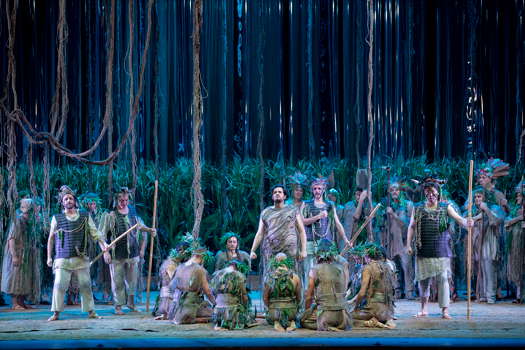
A scene from Lo Schiavo by Antônio Carlos Gomes in Cagliari. Photo © 2019 Priamo Tolu
The orchestra is conducted by John Neschling - a Brazilian of Austrian descent; they underline the thematic cells - a Wagnerian nuance - in the score, and help the singers quite well. The chorus is well led by Donato Sivo in his several interventions.
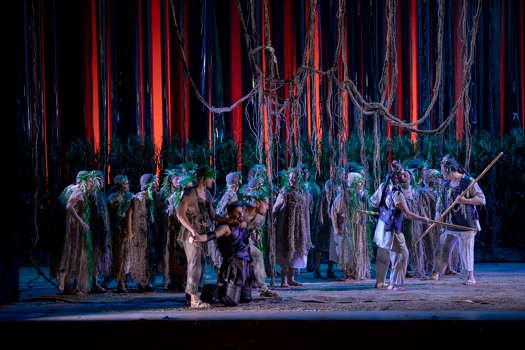
A scene from Lo Schiavo at the Teatro Lirico di Cagliari. Photo © 2019 Priamo Tolu
Massimiliano Pisapia has a role which used to be loved by Enrico Caruso. He has a strong center register and a vivid volume with impressive high Cs. Svetla Vassileva is the woman he is love with; she handles her difficult arias quite well.
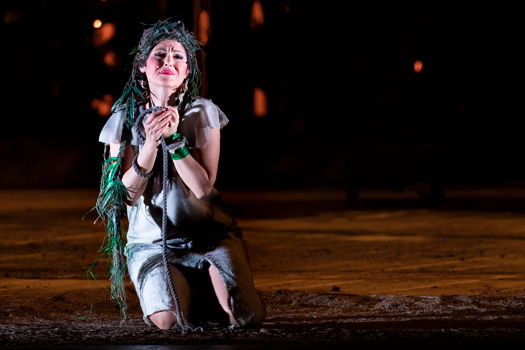
Svetla Vassileva as Llàra, an Indian girl, in Lo Schiavo in Cagliari. Photo © 2019 Priamo Tolu
Rodolfo Giugliani is a melodic 'slave'. Elisa Balbo is the seducing Countess.
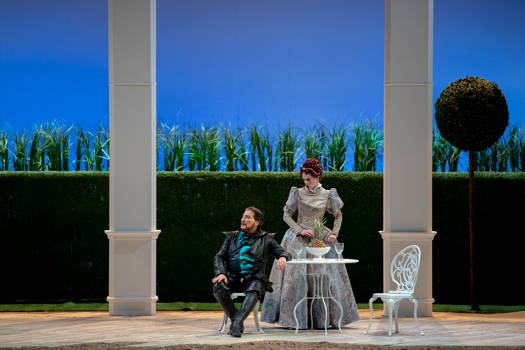
Massimiliano Pisapia as Americo, a young Portuguese man, and Elisa Balbo as the French Countess of Boissy in Lo Schiavo in Cagliari. Photo © 2019 Priamo Tolu
All the others in the many characters of such a complex intrigue were quite good.
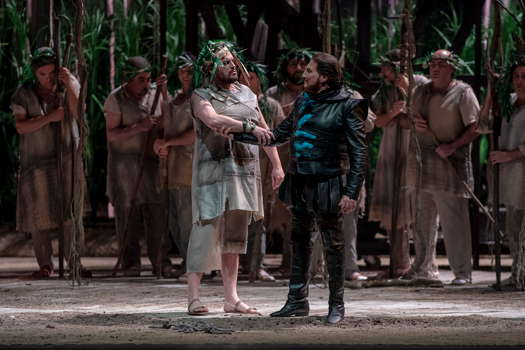
Andrea Borghini as Iberè, the slave, and Massimiliano Pisapia as Americo in Lo Schiavo in Cagliari. Photo © 2019 Priamo Tolu
The audience applauded the main arias and duet, and was enthusiastic at the end of the performance.
It is difficult to foresee whether, with the Cagliari and Manus performances, as well as probably a cycle in Sau Paulo, Lo Schiavo will have a new lease of life in Europe and maybe North America. It is an interesting proposal, and there is renewed interest in late nineteenth century opera, so it could be a good bet.
On the 22 February 2019 opening night, all those in the theatre were invited to Sardinian wine and hors d'oeuvres offered by the sponsors during the intermission - a real touch of class.
Rome, Italy



